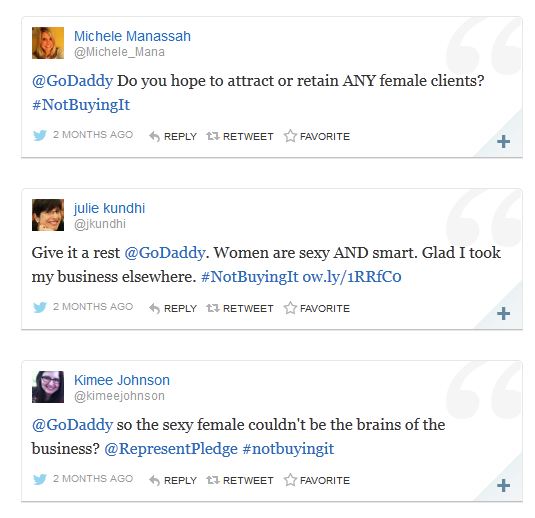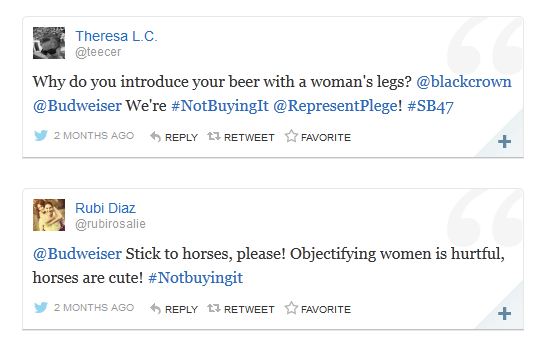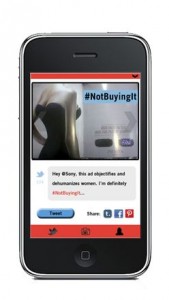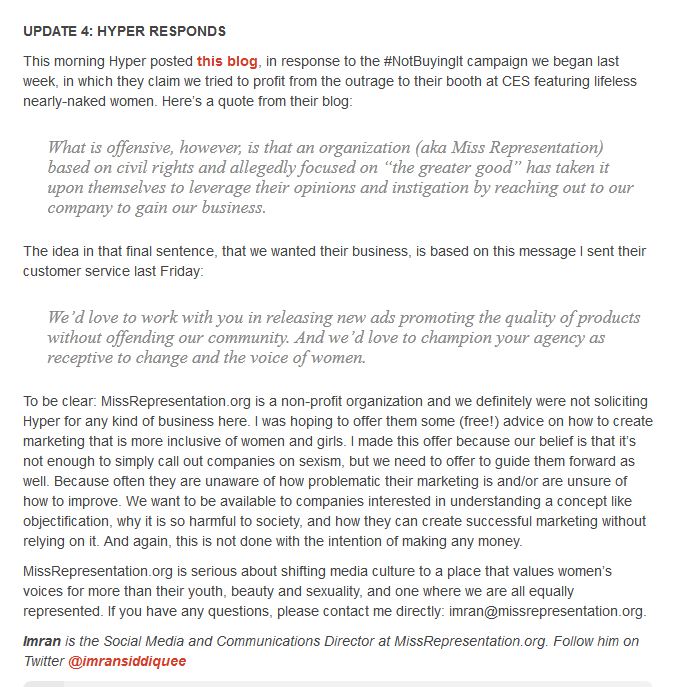It’s all about leveraging the power of consumer engagement, right?
From the opening pages of Brand Media Strategy to the Effie Award-winning Old Spice campaign to our evaluations of the integration of respective brands, 541 has focused significantly on engaging with consumers and allowing their feedback and conversations and activity guide the trajectory of current campaigns and inform future product enhancements and launches.
But what do you do when that feedback is decidedly negative and, furthermore, organized?
Some companies have had to answer that question with the advent of the #notbuyingit Twitter movement. Organized by missrepresentation.org, a non-profit social campaign aimed with the goal of shifting cultural mindsets and ending gender discrimination, the #notbuyingit movement “calls out sexism in the media” and “challenges the misrepresentation of women and girls.”
While the #notbuyingit hashtag has been in use for several years, the movement picked up considerable steam during the 2013 Super Bowl, when some 10,000 people tweeted to decry the sexism they saw in ads by Go Daddy, Audi and Budweiser, just to name a few:
#notbuyingit attracted even more participants in the days after the game as media outlets including CNN and The Boston Globe reported about the campaign:
And now missrepresentation.org is upping its own game with the #notbuyingit app, which organizers say makes it even easier to call out companies they feel are degrading women.
missrepresentation.org expects the number of #notbuyingit tweets to soar with the ease of the app, development of which has been financed in part by $13,000 from interested consumers donated through the indiegogo website.
So what should companies do in the face of such intense consumer blowback? Corporate reactions have been mixed, ranging from this humble post from the founder of Solid Gold Bomb clothing to accusations of extortion:
Negative consumer feedback appearing online certainly isn’t anything new, as anyone who has ever read walmartsucks.org or ihatedell.net can attest. But what makes #notbuyingit a little different is how quickly a campaign can pop up and spread. Just by watching #notbuyingit trend on Twitter, consumers can form opinions about multiple companies and products — no need to visit individual gripe sites. And as we all know from the astonishing billions of Tweets sent each week, retweeting is as easy as click and send.
missrepresentation.org and the consumers who Tweet #notbuyingit say they’re working toward a less sexist culture, something to which companies certainly don’t want be seen as opposed. So how do they respond?
About the Author
Lynn Tefft Hoff is the Assistant Director of Communications for the Radiological Society of North America, a society of 53,000 radiologists based in Oak Brook, Illinois. Lynn is in the Fall 2012 cohort of the Masters of Communication Management program at the University of Southern California. She lives in Aurora, Illinois, with her husband, 10-year-old stepson and 3-year-old son, who doesn’t believe that “writer and editor” is an actual profession and is waiting for her to decide to be a doctor or fireman “when she grows up.” Lynn chronicles life as a mom, middle manager and master’s student at mommyhitsthebooks.com.








14 Responses to What do companies do when consumers are #notbuyingit?